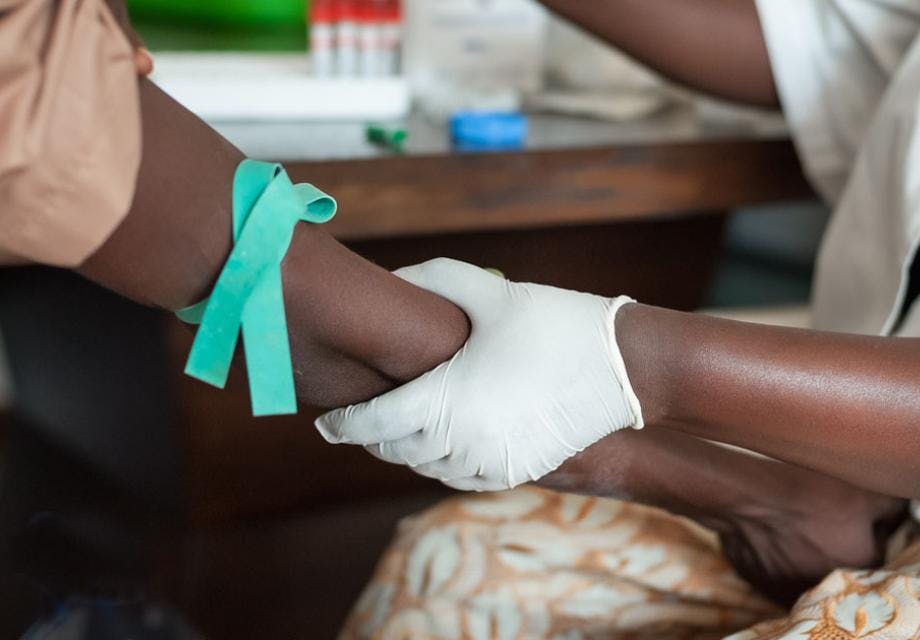Point-of-care viral load testing improves HIV care in 7 African countries
Hester Phillips
28 January 2021
Waiting time for results dramatically reduces when sample analysis happens in health facilities rather than centralised labs – but increased viral loads often go unaddressed.
Data from seven African countries suggests that using near point-of-care (near-POC) viral load testing devices, which enable health facility labs to analyse samples rather than using centralised services, significantly reduces turnaround time for results.
Records from 57 public-health facilities in Cameroon, the Democratic Republic of Congo, Kenya, Malawi, Senegal, Tanzania and Zimbabwe, which introduced near-POC viral load devices between 2017 and 2019, found it took one day for clinics to receive results compared to 35 days when centralised labs were used.
Researchers analysed 6,795 near‐POC viral load tests and 17,614 centralised tests. A third of the near-POC tests were carried out among high‐risk groups, such as people showing signs of treatment failure, pregnant or breastfeeding women and children, compared to just 6% of centralised tests.
Overall, 40% of near‐POC viral load results were available to clinics on the same day and it took a median of six days for people tested using near‐POC to get their results from the clinic. By comparison, it took 68 days for people tested using centralised labs to get their results.
In Cameroon, Malawi and Senegal, it took one day for people to get their results with near-POC testing. But in Kenya and Tanzania, it took between 29 and 30 days for people to get their results via this method, despite the information being back with clinics within one to two days of testing.
Overall, only a third (33%) of people tested using near-POC devices had received their results within 30 days, and half had (50%) within 90 days. By comparison, only 3% of those tested using centralised labs received their results within 30 days, which rose to 27% within 90 days.
In both groups, people with an elevated viral load received their results faster than those who were virally suppressed.
The study also examined how long it took for clinicians to react to elevated viral load results by providing enhanced adherence counselling or changing a patient’s antiretroviral (ART) regimen if appropriate. It took three days for people with an elevated viral load who had tested via near-POC to receive clinical action, compared to 49 days for those found to have an elevated viral load through centralised testing.
After 30 days, only 37% of people with an elevated viral load identified via near-POC had received clinical action. By 90 days this had increased to around half (48%). Among those tested using centralised labs, this was even lower, with only 7% receiving clinical action within 30 days. Clinical action was greatest for those already deemed to be in high-risk groups.
Overall, people who had taken a viral load test were twice as likely to receive their results, and 1.45 times as likely to have action taken if necessary if their results were available to clinics on the same day.
These findings show that much more must be done to capitalise on near-POC viral load devices to ensure timely results translate into improved care. Facilities need support to improve their result documentation. Patient communication and follow‐up also need addressing, as does clinician capacity to decide whether patients are experiencing treatment failure and need to swap to a different ART regimen.
Get our news and blogs by email
Keep up-to-date with all our latest news stories and blogs by signing up to the Be in the KNOW news digest.
